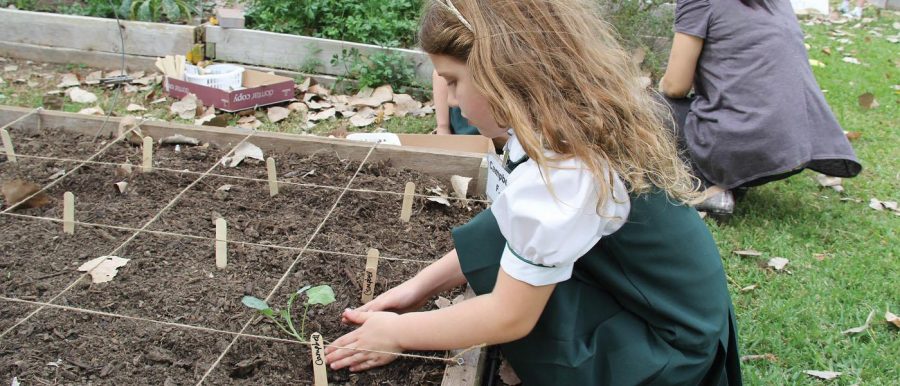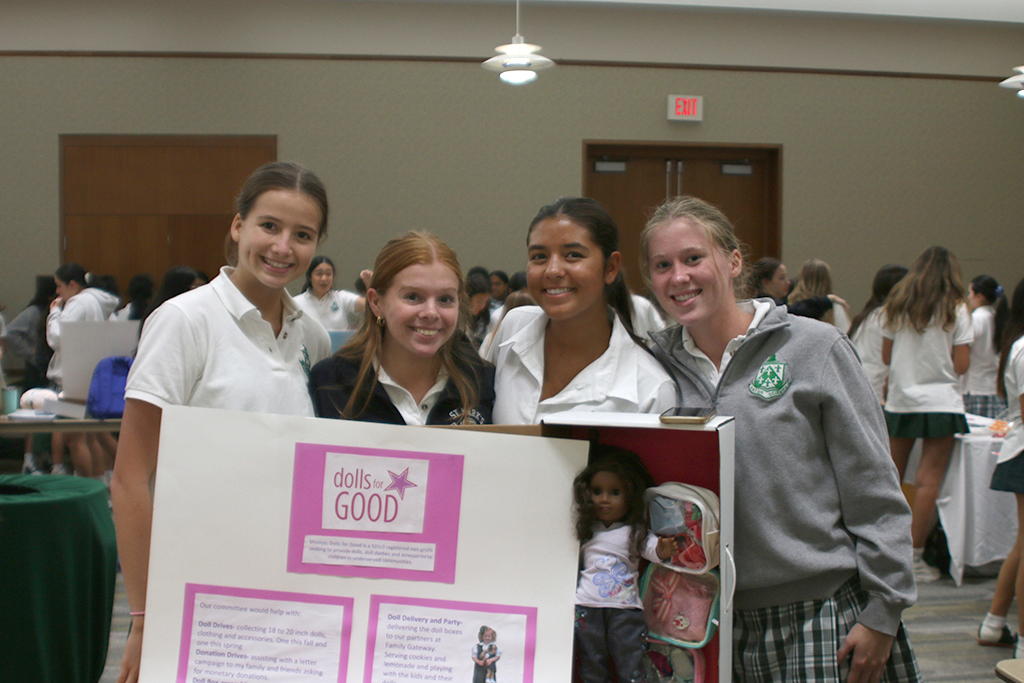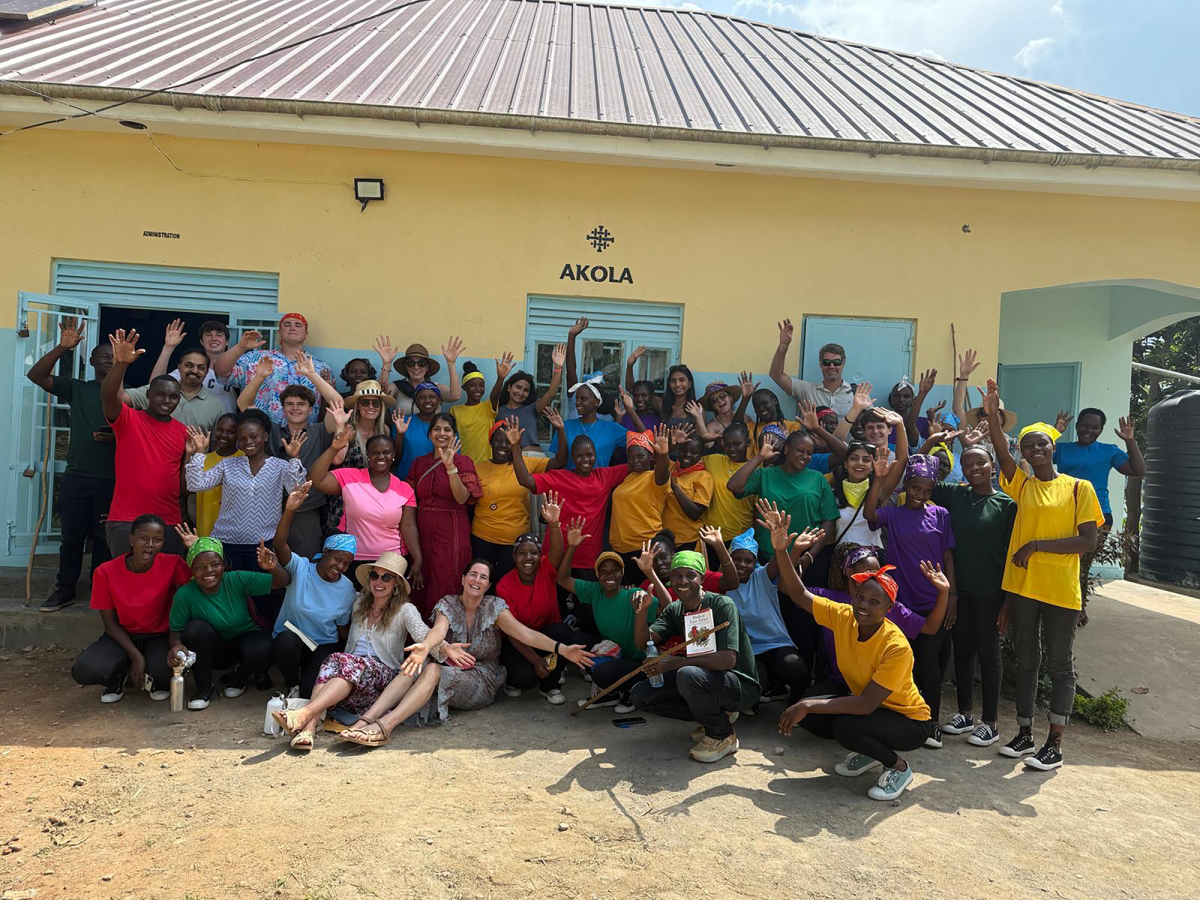As you walk past the Lower School science classrooms in the fall months, the aroma of Hockaday-grown basil and oregano permeates the air, and a buzzing crowd of first or second-graders, observation journals in hands, fills the hallway. Once every six-day rotation for a 40-minute Flex period, first and second-graders leave their classrooms and venture into the outdoors to the Lower School Garden.
The garden was the dream of Danny Keller, a former Hockaday music teacher and a gardener.
Awarded the Prentiss Grant in 2003, Keller traveled to gardens of England as well as “The Edible Schoolyard,” a school-based garden in California. After seeing and working at this garden, Keller hoped to bring a garden to Hockaday to educate the students about the value of fresh foods.
Keller was never able to implement this garden; he died in 2004. After his passing, however, Keller’s friends who knew of his passion gifted Hockaday the initial seed money to purchase the first plant boxes and light garden, thus starting the Lower School Garden.
Lower School Spanish teacher Marcela Gerber, a close friend of Keller, remembers his dedication to his work and students at Hockaday and his passion for gardening.
“This garden, it came out of his love,” she said.
Lower School yoga teacher Cherry Fowler previously used the garden as a tranquil setting for her classes, and Lower School science teacher Lara Guerra took over the maintenance and development of the garden three years ago. Since then, gardening time has been included in the first and second-grade schedule.
But the garden is not simply a hobby for the students: it’s an educational tool as well. Besides planting and harvesting, students keep gardening journals to record observations. The girls also learn how to read a thermometer and record the temperature. Through this, Guerra hopes to collect enough data to make a graph and study trend lines.
“You can tie [the garden] into every single subject. You tell me a direction you want to go and I guarantee you we can tie the garden to it,” Guerra said about the educational possibilities of the garden.
When the harvest is plentiful, Guerra holds cooking classes in which the girls practice math, social studies, music and language in the making of foods like salsa or vegetable soup. Last year, the second graders studied the wildflowers next to the garden by reading about Ladybird Johnson and painting watercolors.
“We do science and gardening, so it’s difficult, but it’s really nice out here in the garden,” first-grader
Maggie Hurley said.
Along with objective skills to be gained from work in the garden, Lower School students learn life lessons through their own crops.
Second grade teacher Kathy Hogan said, “I like seeing the girls really looking intently at the plants and the things they have grown, and I think they love being outside in the fresh air and getting close to nature.”
Guerra also believes that gardening teaches patience, as planting a seed does not result in instant gratification.
Lower School science teacher Amy Banks, who helped the girls plant their crops, sees the benefit of learning about sourcing fresh food.
“Little people think that everything comes from the grocery store and when they reach down and pull a sweet potato out of the ground, it’s like magic. They had no idea that that came from [gardening],” she said.
For the girls, Tuesday Oct. 4 and Thursday Oct. 6 were designated workdays to plant their crops before the temperature dropped too low. Each girl was able to choose from a variety of crops such as radishes, cabbage, lettuce, carrots and more, and plant their seeds in a garden bed.
According to Guerra, the planting process teaches valuable skills, like being exact in seed spacing and working in nature. “It gets them out with their hands in the dirt. They learn not to be afraid of picking up a worm or not to be afraid of picking up that creepy-looking larva,” Guerra said.
After Guerra emailed Hockaday’s faculty and staff inviting them to come help in the planting, she was pleasantly surprised at the turnout. People from the development office, the front desk and several security officers came out to help the girls in the garden.
Along with participation from the on-campus community, Guerra hopes to include more parent volunteers in the gardening program. While some parents have already signed up, she hopes to build the garden so that volunteering spots are in high demand.
When these recently-planted crops are harvested, the vegetables and herbs will be used for a variety of things such as the afternoon snack and cooking classes. And, if there is any surplus, vegetables will be donated to the kitchen.
“I have never seen more excited girls than the ones that came in last year during harvesting time,” said Rhodus.
Guerra sees the garden going even further. One of her immediate goals is to replace boxes and add more space for planting, allowing more classes to participate in the garden. Six boxes have already been replaced and Guerra is working on bringing the third-grade study of Lewis and Clark to the garden.
She sees hope in expanding the garden and other outdoor learning centers around campus, a goal of the science department in the ISAS accreditation plan. Guerra would also like to expand a giving garden, one that donates fresh food to local shelters. Overall, however, she hopes to build the garden into a place where everybody at Hockaday can come to relax and learn.
“I just want everybody to feel like they are able to come, sit in the garden, sit in the picnic tables and just enjoy. It really is a real treasure. We are so lucky to have that space,” she said.
Ali Hurst – Co-Castoff Editor







